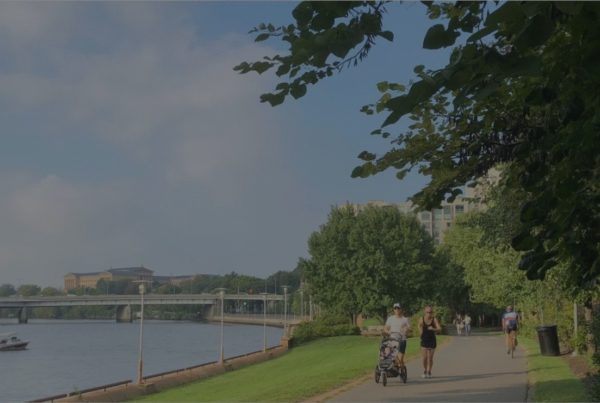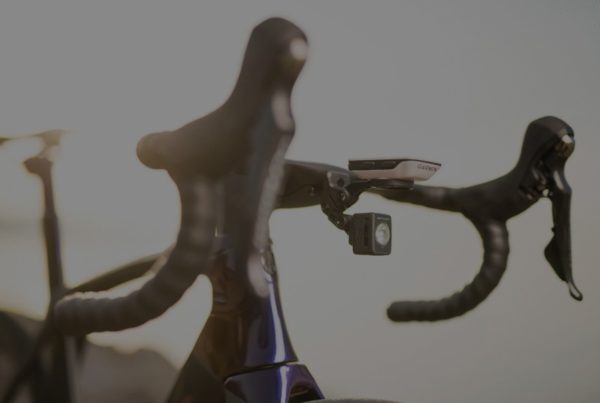By Bob Mionske
Posted Sep. 2, 2004
Dear Bob,(
I am curious what you think of the recent Toronto court decision thatthe City of Toronto owed cyclists a duty of care to maintain a safe cyclingenvironment.(
N.D.(, Colorado
Dear Bob,(
The main highway in our area is scheduled for repaving. This will closeone side of the divided including both shoulders for a ten-mile stretchover a six-month period. The section is used by hard-core commuters andis a popular ride for those who want to get out of town for the weekend.What are the contractor’s obligations to accommodate bicycle traffic? Whatare my rights when a “bike lane closed sign is encountered” on a commute?(
J.M.,(Arizona
Dear N.D. and J.M.(
First, let’s look at the Toronto Case. Several of you have emailedme about this suit, Hannah E. Evans v. City of Toronto. It was aheard in a Toronto small claims court (File No. T64013/02),had no written case findings issued, and was not appealed. Because it washeard in small claims court and was issued with only an oral opinion, thereis no “precedent” and nothing for lawyers or other judges to consult—thecomments of the judge, if any, were simply the opinions of one court. Theinternet commentary on the case can be tracked back to a single source,an expert witness in the case who filed an affidavit largely based on the1999 version of the Guide for the Development of Bicycle Facilities, publishedby the American Association of State Highway and Transportation Officials(AASHTO).
Can You Close a Road to Cyclists?(
The Constitutional “right to travel” is a funny creature. Everyoneknows it exists, but no one seems to know where—it is not explicitly stated,and one federal judge found that at one time or another, the Supreme Courthad attributed seven different clauses of the constitution as the sourceof that right. To make things even more complicated, the ‘right of travel”really isn’t a right of travel—it is more accurately described as a rightof migration from one state to another without interference. However, ina 1972 Pennsylvania case involving a teenage “cruising” ban, a federaljudge said that there truly is such thing as “the right to go where youwant:”
The right of locomotion, freedom of movement, to go whereone pleases, and to use the public streets in a way that does not interferewith the personal liberty of others are basic values implicit in the conceptof ordered liberty . . . One may be on the streets even though he is theremerely for exercise, recreation, walking, standing, talking, socializingor any other purpose that does not interfere with other persons’ rights. . . uninhibited movement is essential to freedom.
Travel by a particular mode of conveyance, however, is a different story.In 1978, cyclists in Omaha, Nebraska sued the Nebraska and Iowa highway departments because they closed three of the four bridges across the MissouriRiver to cyclists. In the case, Wherrett v. Doyale, the cyclistsargued that many of them had to go miles out of their way to get back andforth between Omaha and Council Bluffs, and in the event of an accidentor construction on the fourth bridge, they would have no access at all.The court was unsympathetic:
A threshold question is whether there exists a constitutionalright to travel by a particular means to travel. [The Supreme Court] longago recognized that the nature of our Federal Union and our constitutionalconcepts of personal liberty unite to require that all citizens be freeto travel throughout the length and breadth of our land . . . However,it is a different matter entirely to say that traveling by bicycle is similarlyprotected . . . The right to travel does not require the state to avoidany regulation of methods of transportation if would have only minimal effect.
The court went on to say that even if travel by a single mode were constitutionallyprotected, all that would be required of the highway department would bea showing that the ban was “rationally related” to protecting the safetyof cyclists on unsuitable roads. (I have a second-hand report that ajudge in Ontario in 1991 rejected this same argument, noting that banningcyclists because the road was too dangerous for them “was the ultimateexample of the legal tail wagging the dog.” However, I have not been ableto find this Canadian case. If any of our colleagues north of the borderhave any leads on this, I would appreciate an e-mail.)
A logical retort would be “is the same true for cars?” Yes, single-modetravel by automobile is not constitutionally protected. The issue has beenused (unsuccessfully) to fight the suspension of drivers’ licenses by thosecollecting too many moving violation “points.”
In 1987, the City of New York passed, with 10 days warning, a regulationbanning bicycles on Madison Avenue for 90 days to facilitate utility repairs,although it was widely believed a permanent ban was planned. The New YorkAssociation of Bicycle Messengers sued, (Assn. of Messenger Servicesv. City of New York), claiming the ban violated both state and federalconstitutions and the procedure in the city’s charter enacting new administrativeregulations. The court ducked the constitutional issues entirely, but agreedthe ordinance was invalidly approved:
Although no public hearing is mandated [in the charter]before a regulation becomes effective, the right to communicate views tothe decision maker before the decision is made is certainly more in harmonywith the democratic process than to permit a commissioner to change governingrules overnight without notice to the community or the segment of the population affected.
On the other hand, ten year later, a New York judge, in Kaehny v. Lynn,threw out an injunction prohibiting the city’s DOT from closing the bikelanes on the Queensboro Bridge for most of the day to facilitate construction.Unlike the Madison Avenue case, the DOT already had statutory authorityto close vehicle or bicycle lanes:
The city charter gives the DOT the authority to post trafficsigns regulating pedestrian and vehicle traffic on city bridges. Basedon these existing rules—which were inapplicable to the situation presentedin Messenger Services, the DOT has the authority to regulate pedestrian and cyclist access.
And unlike Messenger Services, the judge in this case was willing to confrontthe constitutional issues the cyclists raised. The outcome was not pretty:
This attempt to couch the DOT’s actions in terms of a constitutionalright cannot save petitioner’s application. Even if the court were to presumethe existence of a constitutional right of [local] travel, that right wouldnot extend to a particular mode of travel. Highway safety regulations,such as the restriction at issue here, enjoy a strong presumption of validity. . . The lane restriction imposed by [DOT] involves questions of judgment,discretion and the allocation of resources and priorities which are inappropriatefor resolution in the judicial arena.
One of the most unusual cases in the history of bicycle law similarly occurredin New York, in 1991, and also involved the bike lanes on the Queensborobridge. (People v. Gray et al) To facilitate the flow of motor vehicles,the city moved bikes from a dedicated lane to the sidewalk, using the formerbike lane for traffic, and opened a tightly-spiraled access ramp formerlyused only by bikes to mixed traffic. Transportation Alternatives, a localadvocacy group, protested and blocked the former bike lane. After beingarrested, they dispersed without incident. At trial, they pled not guiltyto disorderly conduct by reason of necessity, claiming their action wasnecessary to prevent a greater evil. The judge explained their defense:
Through their testimony and that of their experts . . .it was clear that these defendants were motivated by the desire to preventwhat they called the “asphyxiation of New York” by automobile related pollution. . .they also acted to prevent serious injuries to those individuals whocontinued to alternative forms of transportation on the bridge.
And the judge bought it!(
“In this case . . . it is clear that defendants chose thecorrect societal value. It is beyond question that both the death and illnessof New Yorkers as a result of additional air pollution, and the dangerto cyclists and pedestrians posed by vehicles on the south [approach ramp]are far greater harms than that created by the violation of disorderlyconduct.
A more difficult issue is whether the defendants’ perception of harmwas reasonable . . . The only road open to bicyclists and pedestrians isnow practically inaccessible to them during the hours most critical totheir return home. [The DOT’s own study acknowledges] that the currentlevel of bicycle ridership in New York City is indicative only of thoseindividuals who are so dedicated to cycling that they are willing to utilizea transportation system that has been shaped for decades without provisionfor them . . .
The defendants are therefore acquitted and released.”
Good luck- Bob(
(Research and drafting assistance provided by Bruce Epperson J.D.)
Now read the fine print:
Bob Mionske is a former competitive cyclist who representedthe U.S. at the 1988 Olympic games (where he finished fourth in the roadrace), the 1992 Olympics, as well as winning the 1990 national championshiproad race.After retiring from racing in 1993, he coached theSaturn Professional Cycling team for one year before heading off to lawschool. Mionske’s practice is now split between personal-injury work, representing professional athletes as an agent and other legal issues facing endurance athletes (traffic violations, contract, criminal charges, intellectual property, etc).If you have a cycling-related legal question, please send it to mionskelaw@hotmail.com Bob will answer as many of these questions privately as he can. He willalso select a few questions each week to answer in this column. General bicycle-accident advice can be found at bicyclelaw2.wpengine.com.
Important notice:
The information provided in the “Legally speaking”column is not legal advice. The information provided on this publicweb site is provided solely for the general interest of the visitors tothis web site. The information contained in the column applies to generalprinciples of American jurisprudence and may not reflect current legaldevelopments or statutory changes in the various jurisdictions and thereforeshould not be relied upon or interpreted as legal advice. Understand thatreading the information contained in this column does not mean youhave established an attorney-client relationship with attorney Bob Mionske.Readers of this column should not act upon any information contained inthe web site without first seeking the advice of legal counsel.
This article, The right to go from point ‘A’ to point ‘B’, was originally published on VeloNews on September 2, 2004.



